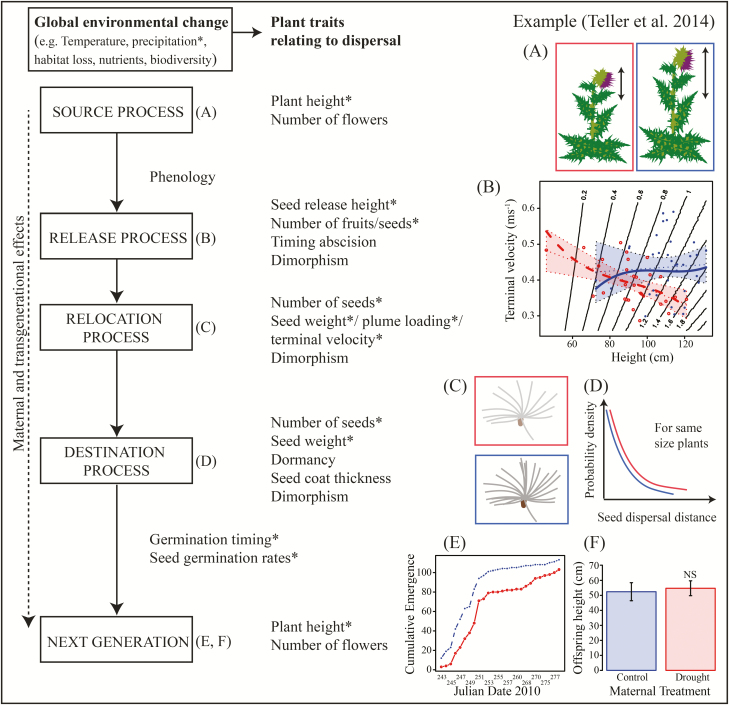Figure 1.
Dispersal stages, and possibilities of their modification via rapid responses of plant dispersal traits to global environmental change. Global environmental change includes changes in temperature, precipitation, habitat availability, biodiversity and nutrient availability, which in turn can elicit rapid responses in plant traits affecting their dispersal. These responses may affect traits of the maternal plant up to seed release (Source processes), traits that directly influence the initiation of dispersal (maternal or seed traits) (Release processes) and the dispersal process itself (seed traits) (Relocation process), traits that are important after the dispersal process (seed traits) (Destination process) and might even affect the performance of the next generation (maternal and transgenerational effects) (Process stages Jongejans et al. 2015). Potential consequences of a rapid response of dispersal traits to climate change are exemplified with a study by Teller et al. (2014). They studied the effect of drought on varying dispersal traits during different stages of the dispersal process (traits with *) in Carduus nutans. Drought conditions (red figures) reduced plant and seed release height, whereas well-watered plants (blue figures) showed more variability in their height (A). Interestingly, seeds from taller C. nutans plants in the drought treatment should disperse at least as far as same-sized individuals under well-watered conditions due to a decrease in seed terminal velocity in the drought treatment (B). Under drought stress, phenotypic plasticity of maternal plant and seed traits (C) could hence favour longer distance dispersal (D) but with the cost of fewer seeds that might also germinate later (E). Maternal effects for the next generation could not be observed in this example (F). Panels (B), (E) and (F) are reproduced with permission from Teller et al. (2014).

